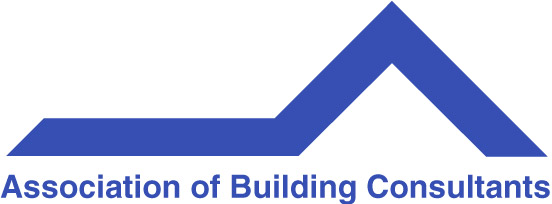Common issues in SA homes – and how to fix them
Whether you’re in a historic Adelaide villa, a suburban family home or a regional property, issues tend to pop up time and time again due to our climate, building materials and local environment.
The good news is that most of these problems can be identified early and managed with a little know-how and some preventative action. In this blog, we explore the most common issues facing South Australian homeowners and share practical tips to prevent or mitigate them.
Cracking and movement in walls
One of the most frequent issues in South Australian homes is cracking in walls, particularly in older properties or those built on reactive clay soils, which are common across the state. These soils expand when wet and shrink when dry, causing ground movement that leads to cracks in plaster, brickwork and foundations.
To help address and prevent this:
- Manage moisture levels: ensure good drainage around your home by keeping gutters clear and installing an underground stormwater pipe system to direct water away from the foundations.
- Monitor cracks: hairline cracks are often cosmetic, but wider cracks (over 5mm) may signal structural issues requiring professional assessment.
- Install flexible joints: for brick homes, using flexible movement joints can help accommodate movement without causing significant damage. However, this sort of work should not be attempted by a handyman and professional advice should be sought first.
If cracks are worsening or you’re concerned about structural integrity, consulting a building professional is key to identifying and addressing the root cause.
Rising damp and mould
With South Australia’s mix of older homes and periods of heavy rain, rising damp and mould can become persistent problems. Rising damp occurs when moisture from the ground seeps up through walls, leaving tell-tale water stains, blistering plaster, peeling paint and musty odours.
To prevent or mitigate damp issues:
- Ensure proper ventilation: use exhaust fans in bathrooms, the kitchen and laundry to reduce humidity levels and minimise the risk of mould.
- Check for water leaks: regularly inspect pipes, gutters and downpipes for leaks that may contribute to damp conditions.
- Have a damp-proof course installed: older homes may not have this moisture barrier, so retrofitting by a professional can prevent damp from creeping up walls.
Termite (white ant) infestations
Termites (also called white ants) are a notorious problem for many South Australian homeowners. These tiny but destructive pests thrive in timber and can cause significant damage if left undetected. South Australia’s warm climate and dry conditions create ideal conditions for termite activity.
To safeguard your home:
- Schedule regular inspections: arrange for a termite inspection at least once a year to detect activity early.
- Maintain timber and garden areas: avoid storing firewood near the home, and keep garden beds and mulch away from external walls.
- Install barriers: chemical or physical termite barriers can help protect your property from infestations.
If you suspect termite activity, don’t disturb them—contact a pest control professional immediately to assess the situation and provide treatment.
Poor insulation and extreme temperatures
South Australia is known for its scorching summers and chilly winters, which can make temperature control a challenge, particularly in older homes with inadequate insulation. Poor insulation means homes struggle to retain warmth in winter or keep cool in summer, leading to uncomfortable living conditions and higher energy bills.
To improve comfort and energy efficiency:
- Upgrade insulation: Consider adding ceiling, wall or underfloor insulation to regulate temperatures year-round – particularly if you plan to renovate.
- Seal gaps and draughts: small gaps around doors, windows and floors can let hot or cold air escape. Simple solutions like weather stripping can make a big difference.
- Invest in energy-efficient glazing: double-glazed windows can reduce heat transfer and improve comfort in extreme weather.
Addressing insulation and airflow not only improves living conditions but also reduces energy costs in the long run.
Salt damp
For homes near South Australia’s stunning coastlines, salt damp can be a real concern. Salt damp occurs when salt-laden moisture is drawn up into walls, causing crumbling plaster, flaking paint and weakened structures. This issue is especially common in older stone and brick homes.
To mitigate salt damp:
- Maintain ventilation: good airflow in the underfloor area (where the floor is timber) and around walls helps reduce moisture build-up.
- Repair damaged masonry: addressing affected areas early can prevent widespread damage.
- Use appropriate materials: if renovating, choose salt-resistant renders and paints to better withstand harsh coastal conditions.
Roof damage and leaks
South Australia’s unpredictable weather, from heavy rain to strong winds, often takes its toll on roofs. Damaged tiles, flashing or gutters can lead to leaks, water damage and costly repairs if left unchecked.
To prevent roof-related problems:
- Regular inspections: check your roof annually for cracked tiles, loose flashing and blocked gutters.
- Clean gutters and downpipes: prevent water overflow by removing leaves and debris. This is especially important if you have a box gutter.
- Address minor repairs promptly: fixing small problems early can prevent bigger headaches down the track.
Outdated electrical systems
Many older South Australian homes were built with electrical systems that no longer meet modern safety standards or power demands. Faulty wiring, overloaded circuits and ageing switchboards can pose serious safety risks, including fire hazards.
To stay safe and compliant:
- Upgrade your switchboard: modern switchboards with safety switches protect against electrical faults and shocks.
- Check wiring: hire a licenced electrician to inspect old wiring, particularly in homes built before the 1980s.
- Install modern outlets: adding additional power points can prevent the need for dangerous extension cords and power boards, but can sometimes overload a circuit so hire a licenced electrician to do the work for you.
Electrical safety is not an area to DIY—always rely on a licensed professional for upgrades and repairs.








